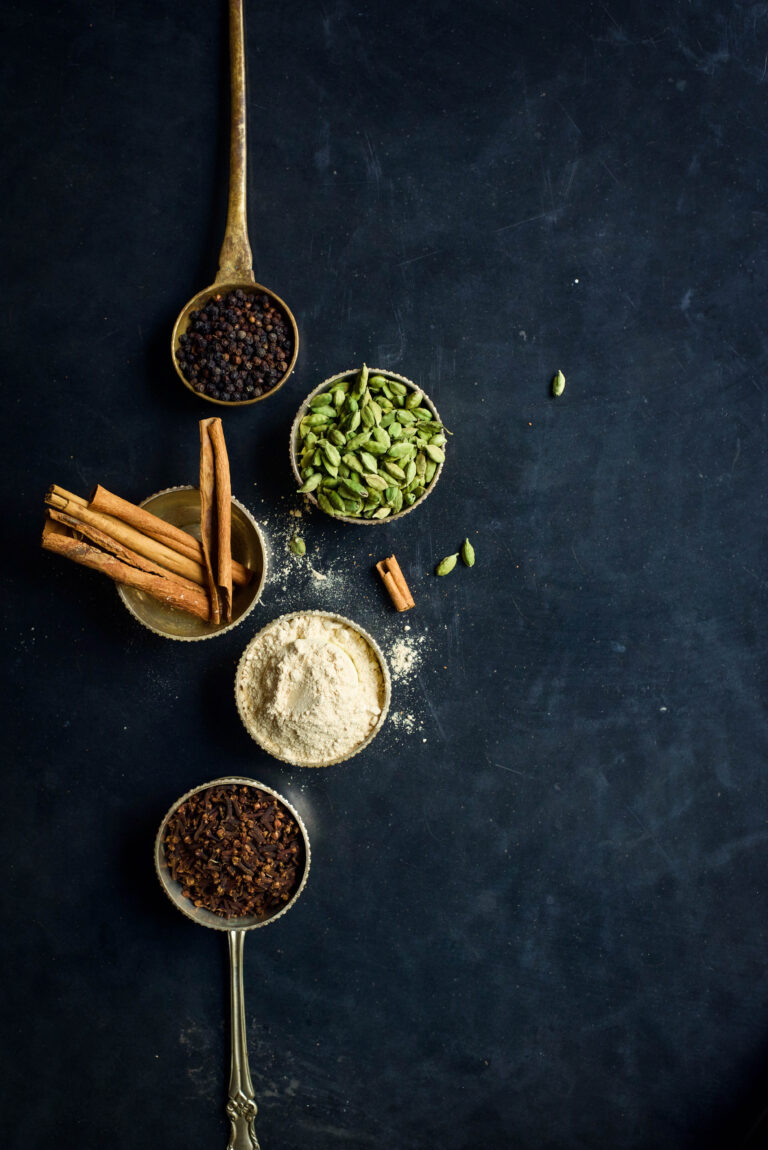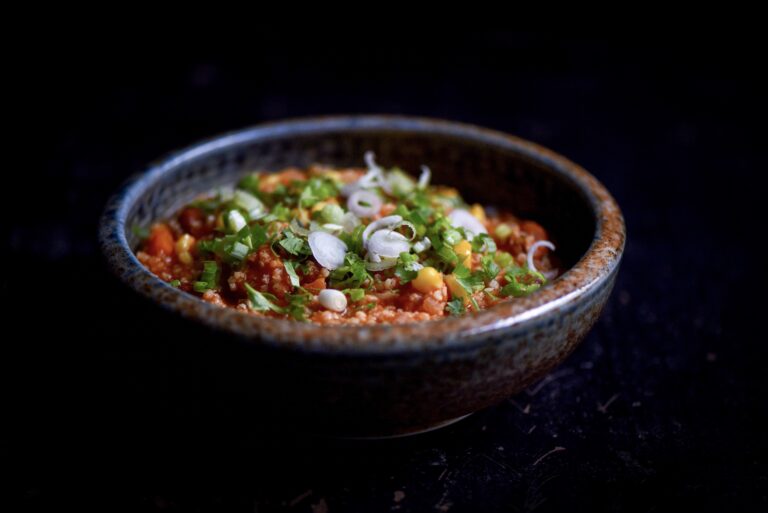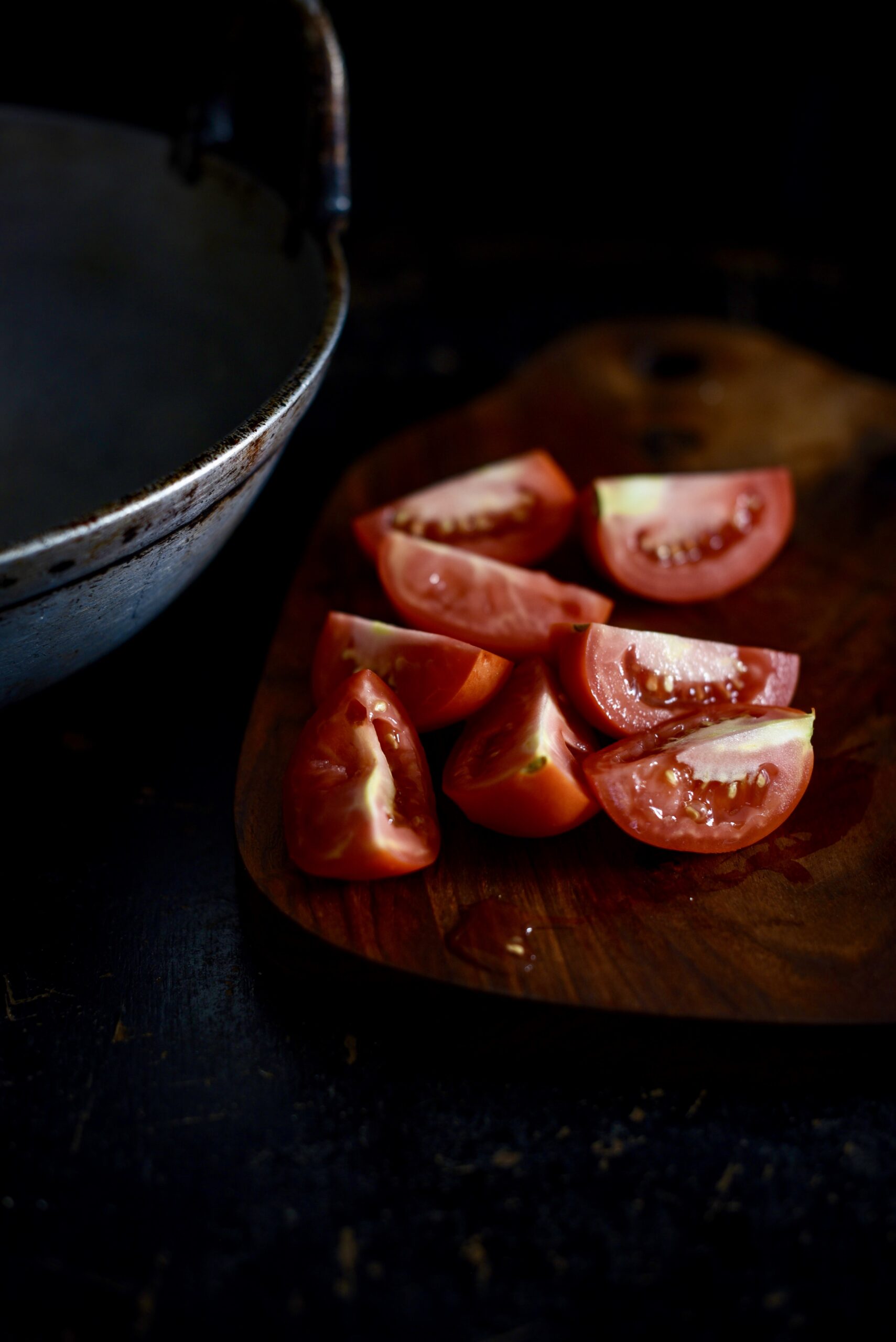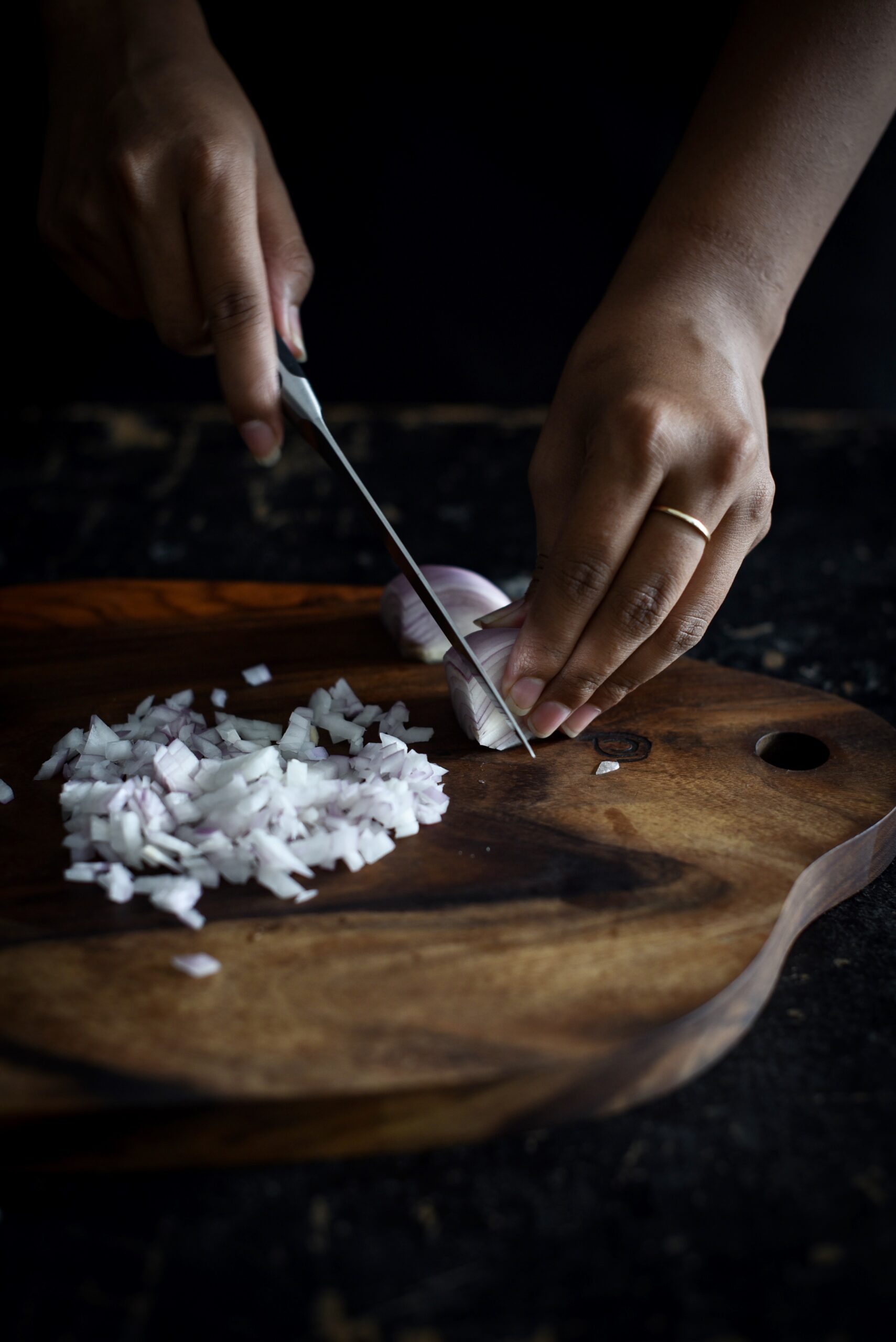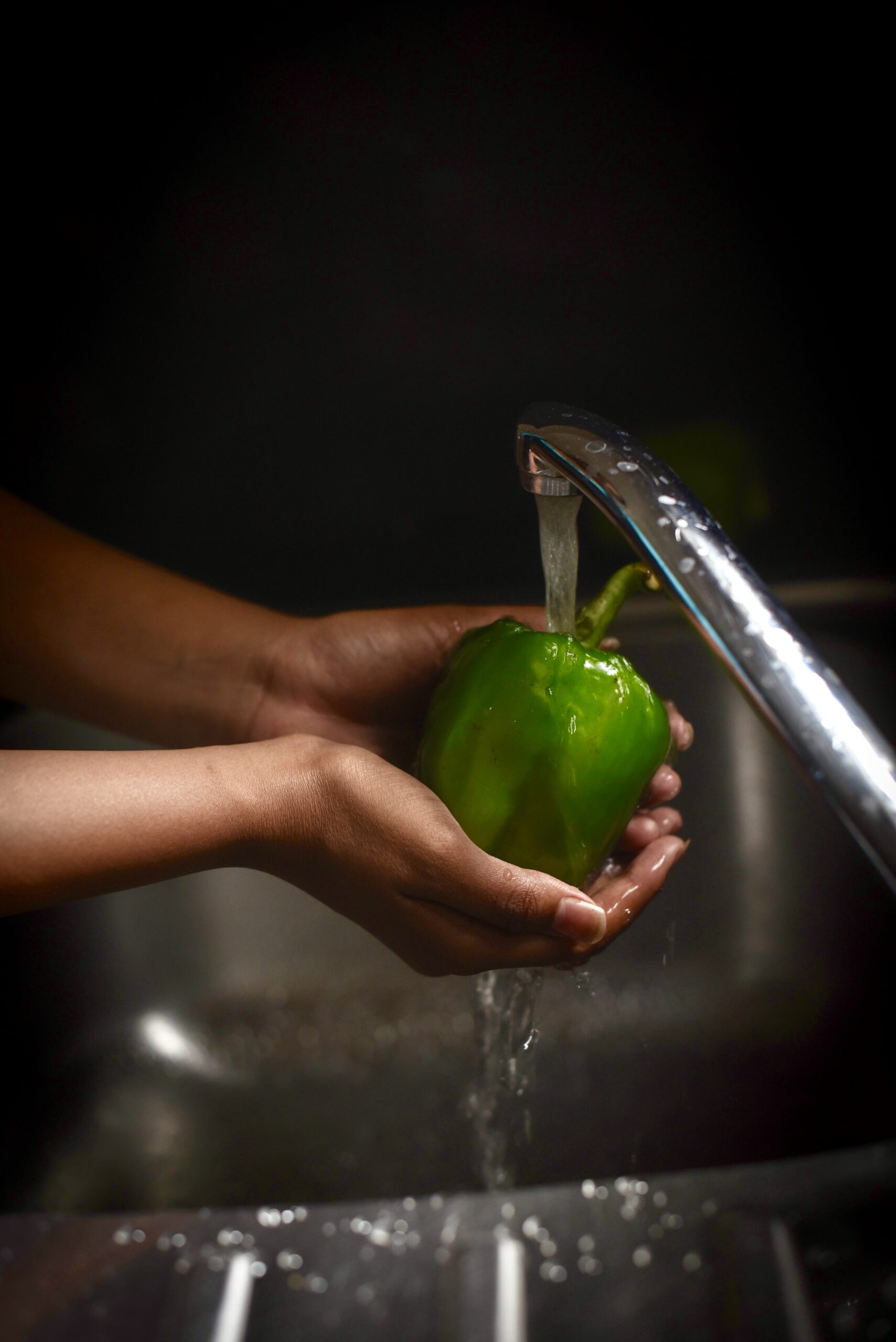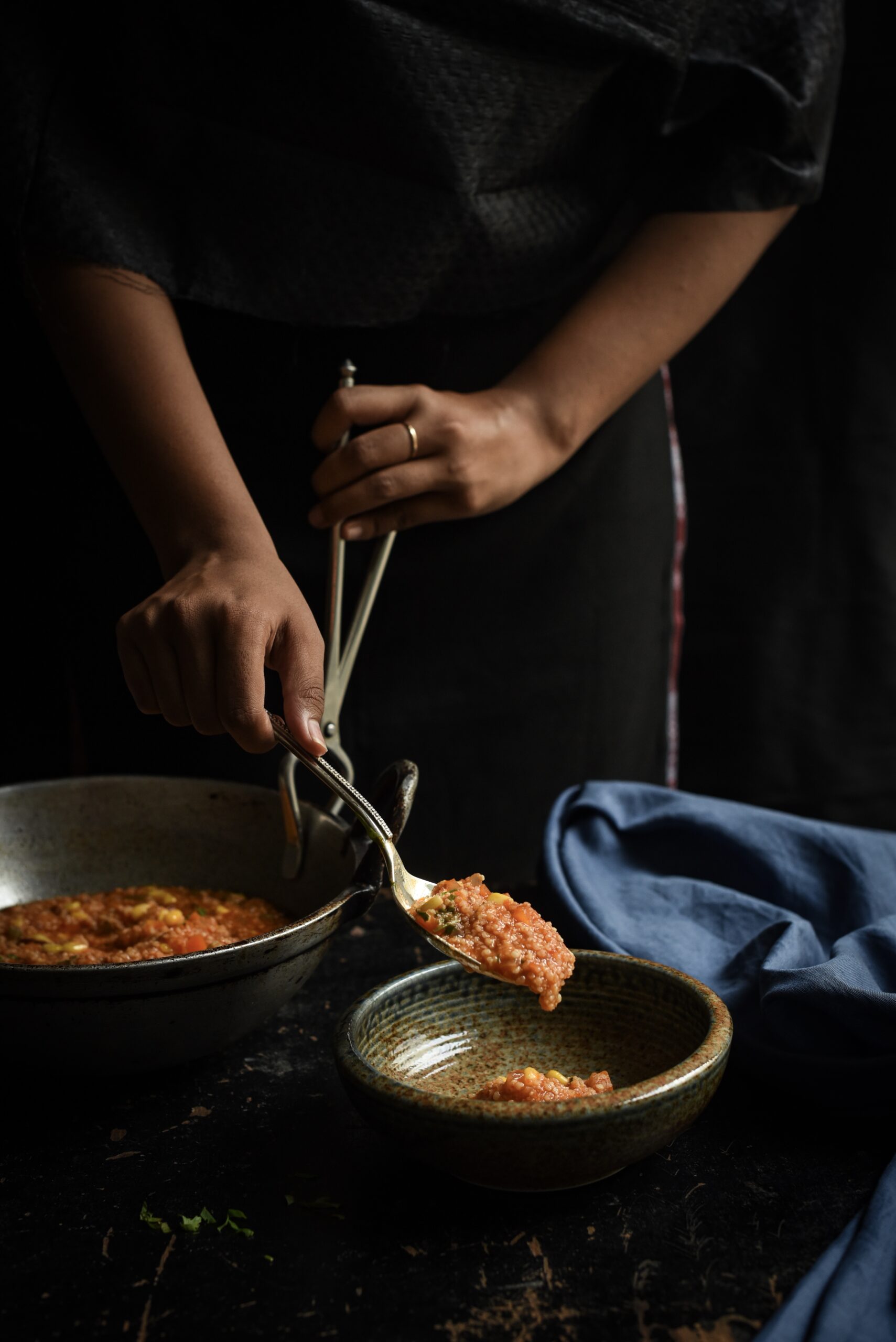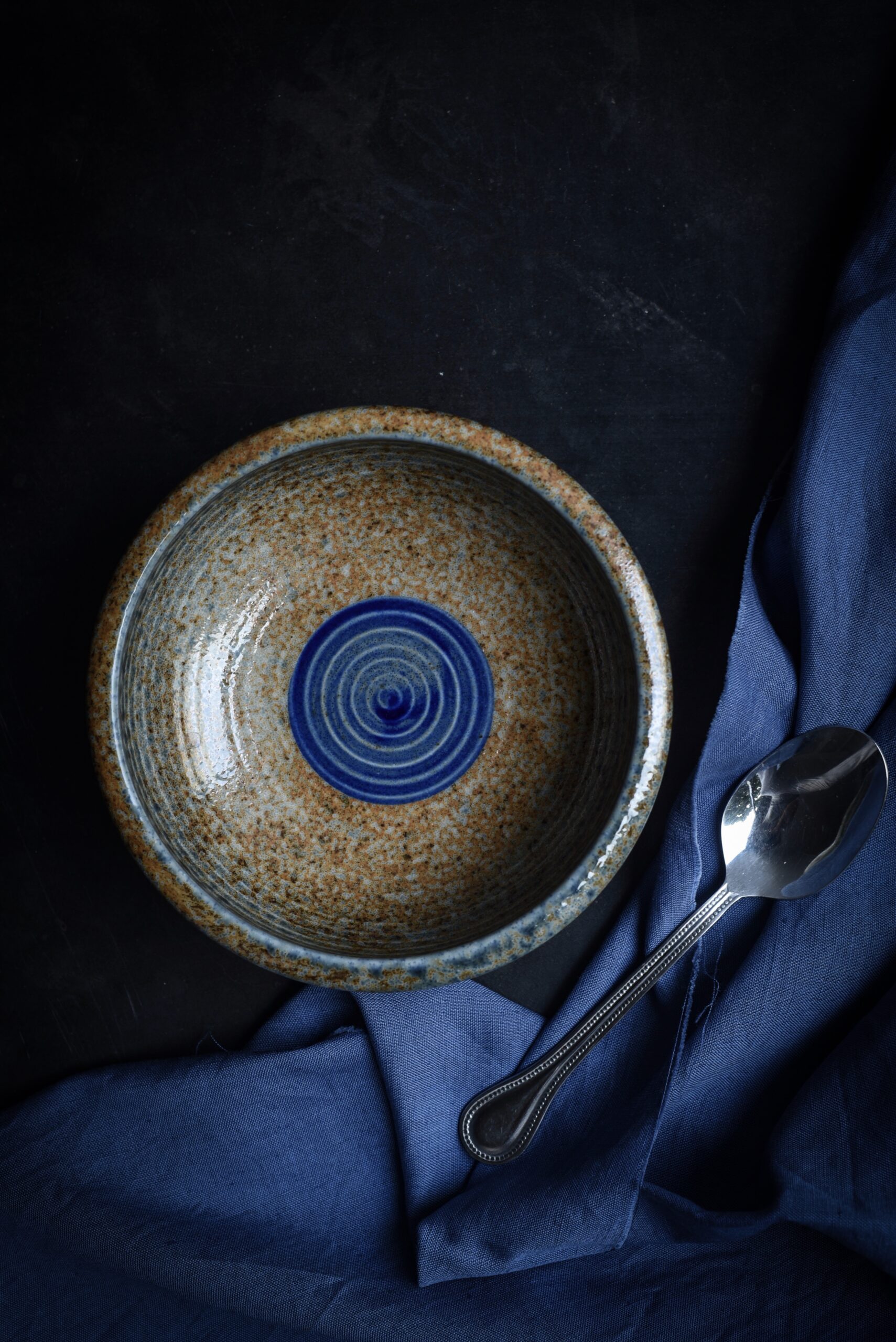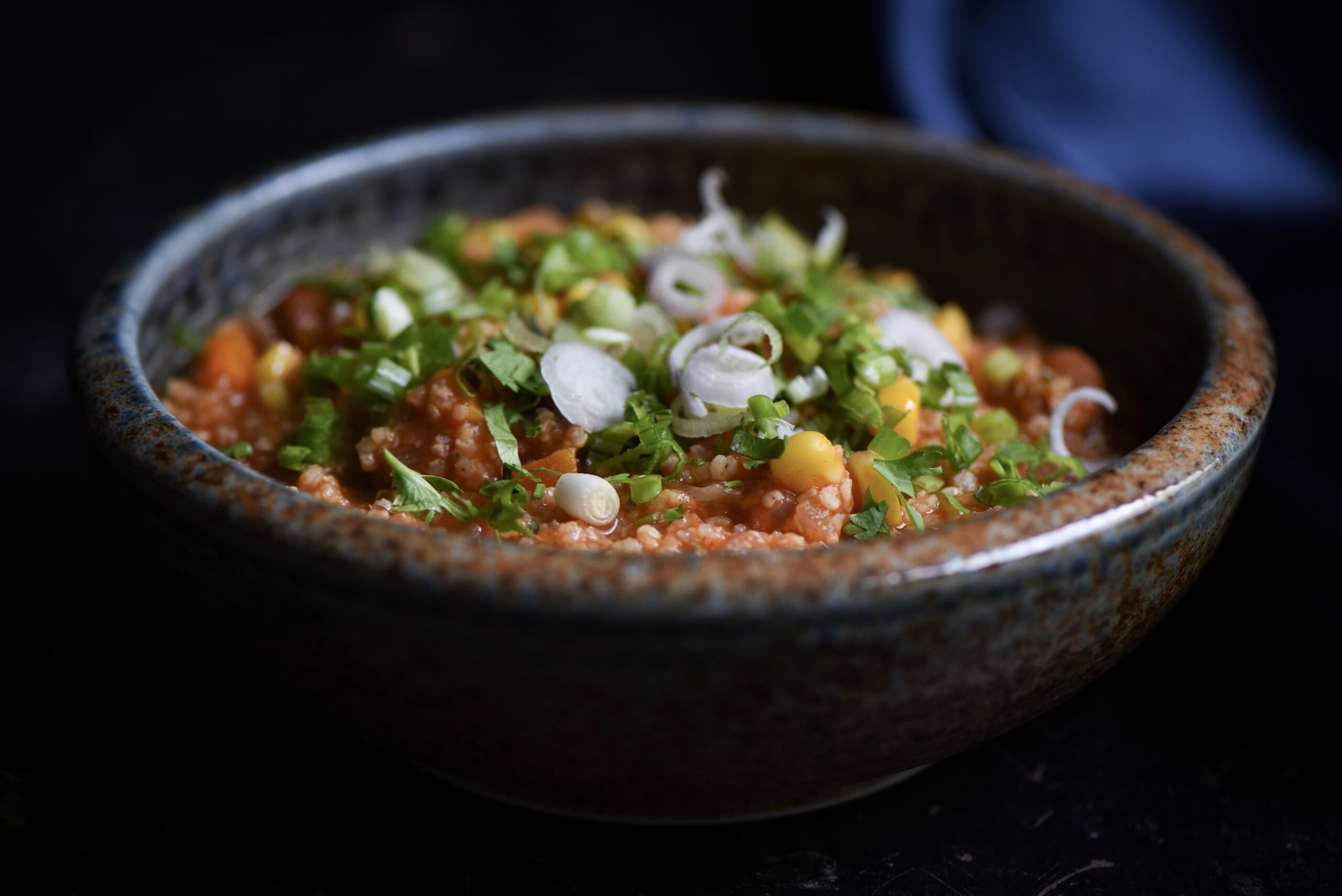Standing at that quaint tea shop in Kolkata that early November morning, I realised that the city had been awake for hours. We were on a guided tour, and as we found ourselves there for our first cup of the day, I noticed how around us were people who had taken a pause during their work. All of us – locals and tourists, at leisure or on the job – were treating ourselves to a small terracotta or glass cup of warm chai. In just five minutes, I saw not only a classic street-style chai-making procedure, but faces from everywhere – each of them enjoying a rejuvenating sip of this quintessential beverage.
I couldn’t resist picking up my camera. I was so pleased that these men, for whom this particular stall is a routine, were happy not just to be photographed but also to chat! They say a cup of tea brings people together – and for a few minutes on a morning in Kolkata, that’s exactly what happened.

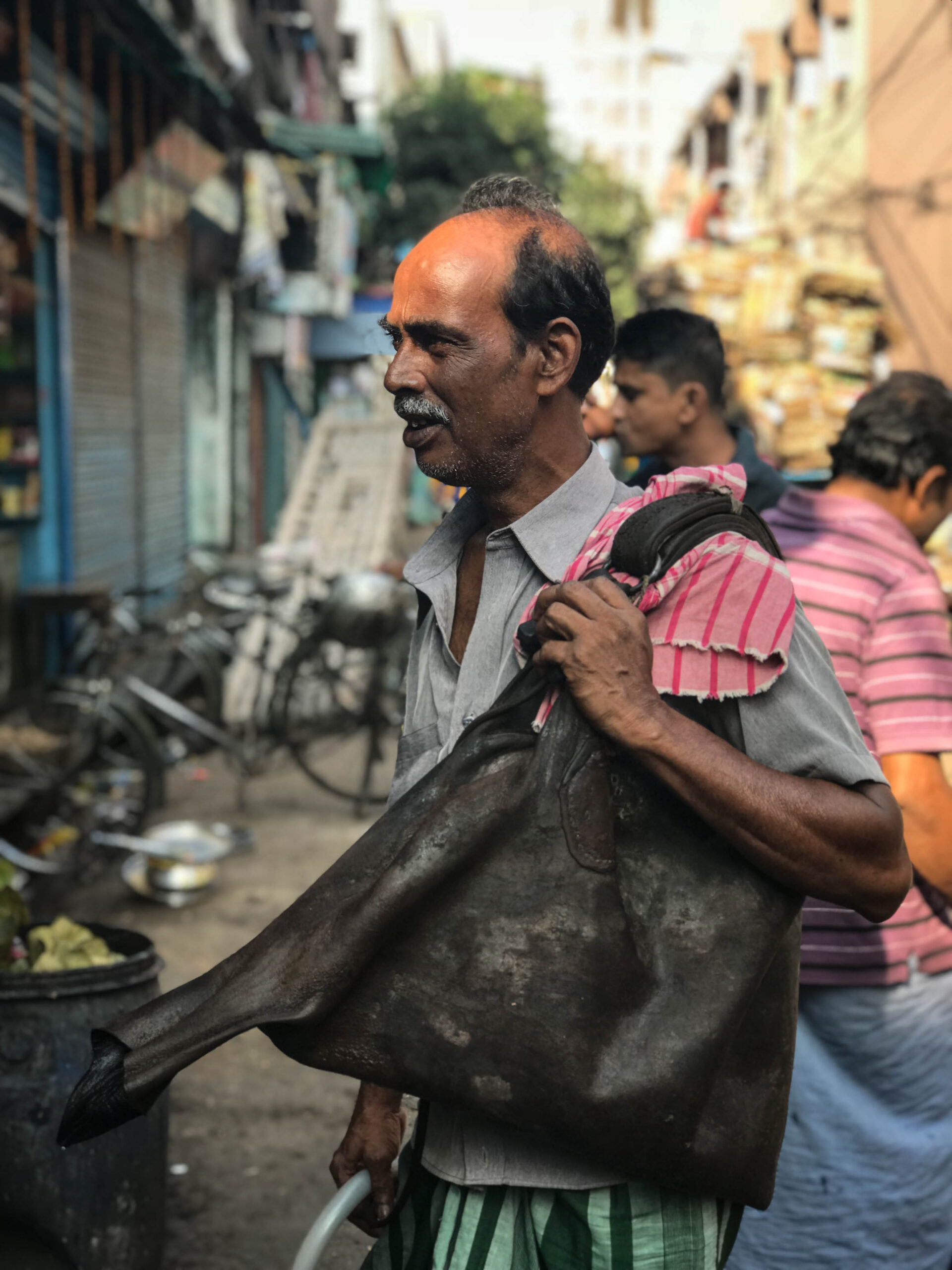
It was this man’s mashk – a goat-skin bag – that caught my eye. He sells water from it, at ₹10 a serving. He proudly told us that the neighbourhood we were in is colloquially known as Bheeshti Para, an homage to the traditional occupation of the water-carrier (known as “bheeshti”). He also shared that the etymology of “bheeshti” comes from the Persian word “bihisht”, which means “paradise”). How poetic – the water-bearer from paradise, bringing succour to the thirsty.
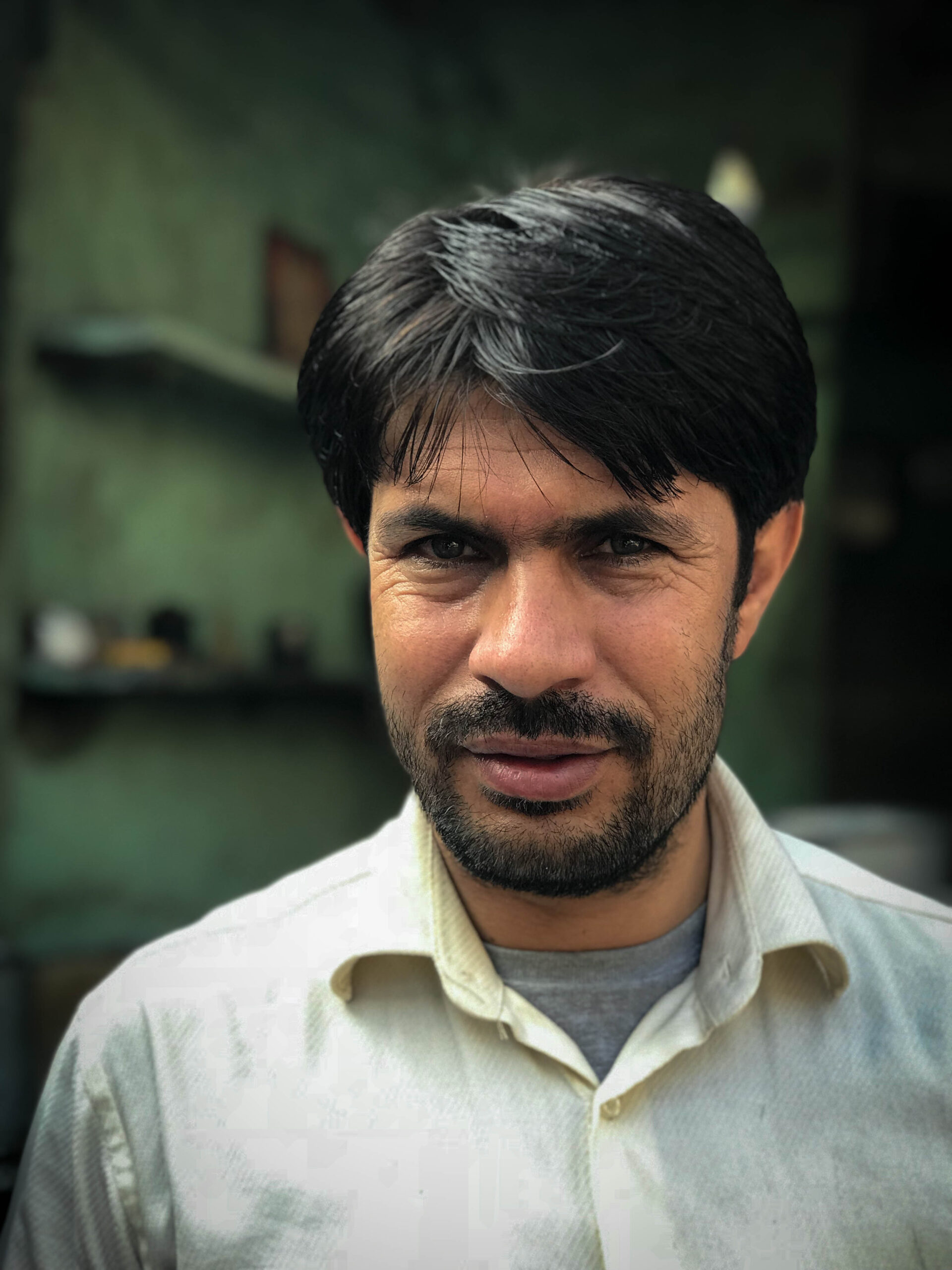
We also met this money-lender whose family is from Afghanistan – one of the many communities who settled in Kolkata, who have carried the trade on for generations. In fact, Afghani money-lenders were popularised in Rabindranath Tagore’s short story “Kabuliwala” (literally, “the man from Kabul”), which was also made into a number of films.
Kolkata is home to many such communities of foreign origin, who have enriched it. For instance, it is the only South Asian city with a Chinatown, thanks to several generations of people originally from China who have made it their home. There are also Anglo-Indians, Parsis and numerous other uniquely Indian cultures. And there I was, a Tamil Nadu-raised Gujarati, sipping from my terracotta cup too.
It’s always a pleasure for me to watch another culinary expert at work. Look at the precision of this chai-maker’s tea-pouring technique!
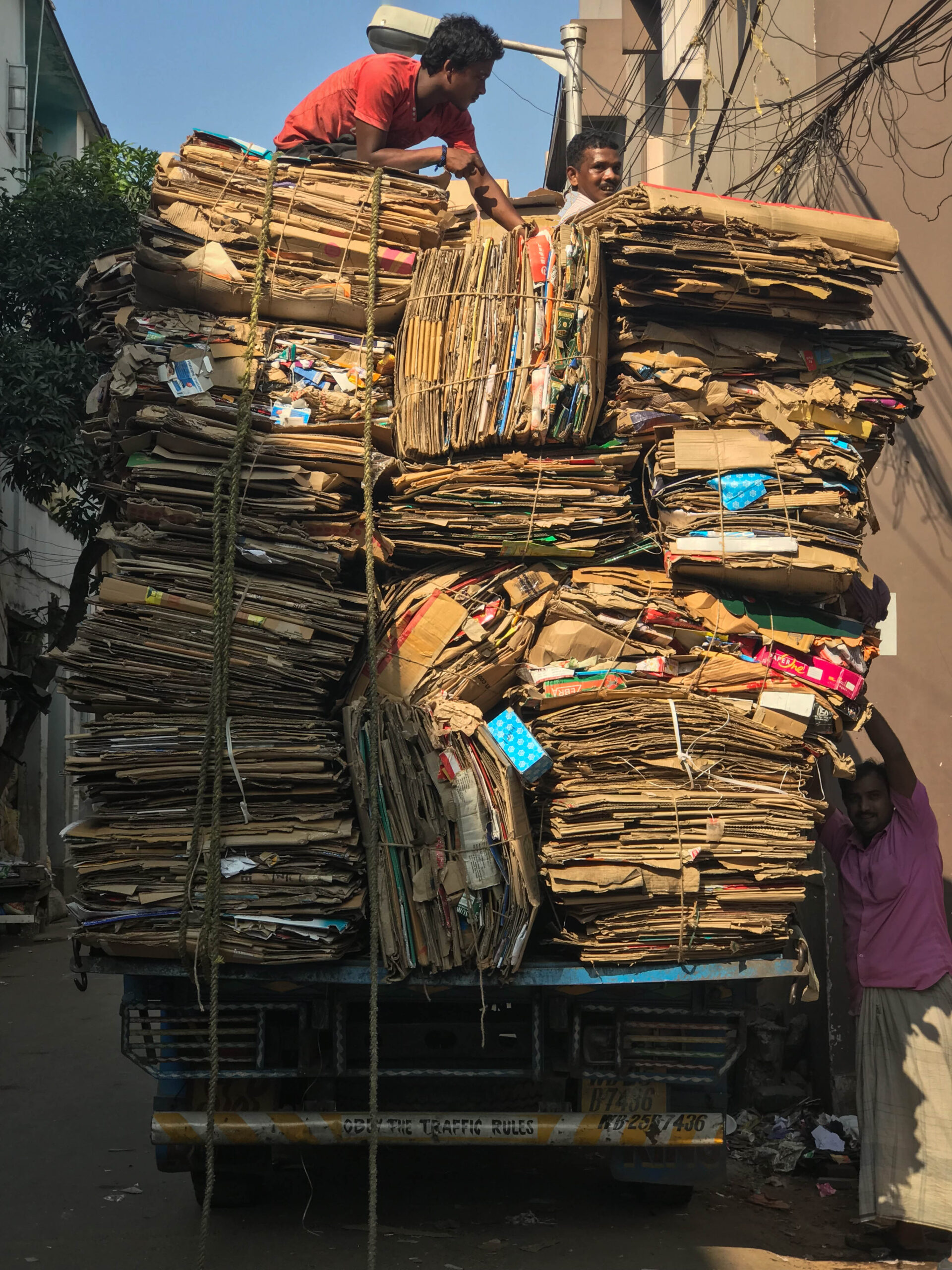
The street was abuzz with life that morning, as the fogginess gave way to bright sunlight. A recycling truck was passing by. Right next door to the tea stall was a food stall selling breakfast: pooris, pickles and savouries. Somewhere nearby, I am sure that the famed Bengali milk sweets were being made and sold too.
And how amazing is it that one morning I was drinking Bengali tea at a street-side stall in Kolkata, and the next morning I was back here in Coffeeland aka Chennai, a land famous for its filter coffee? I love my coffee anywhere in the world, but the moody monsoonal rain and my recent trip inspired me to recreate that hot, spiced tea here at home.
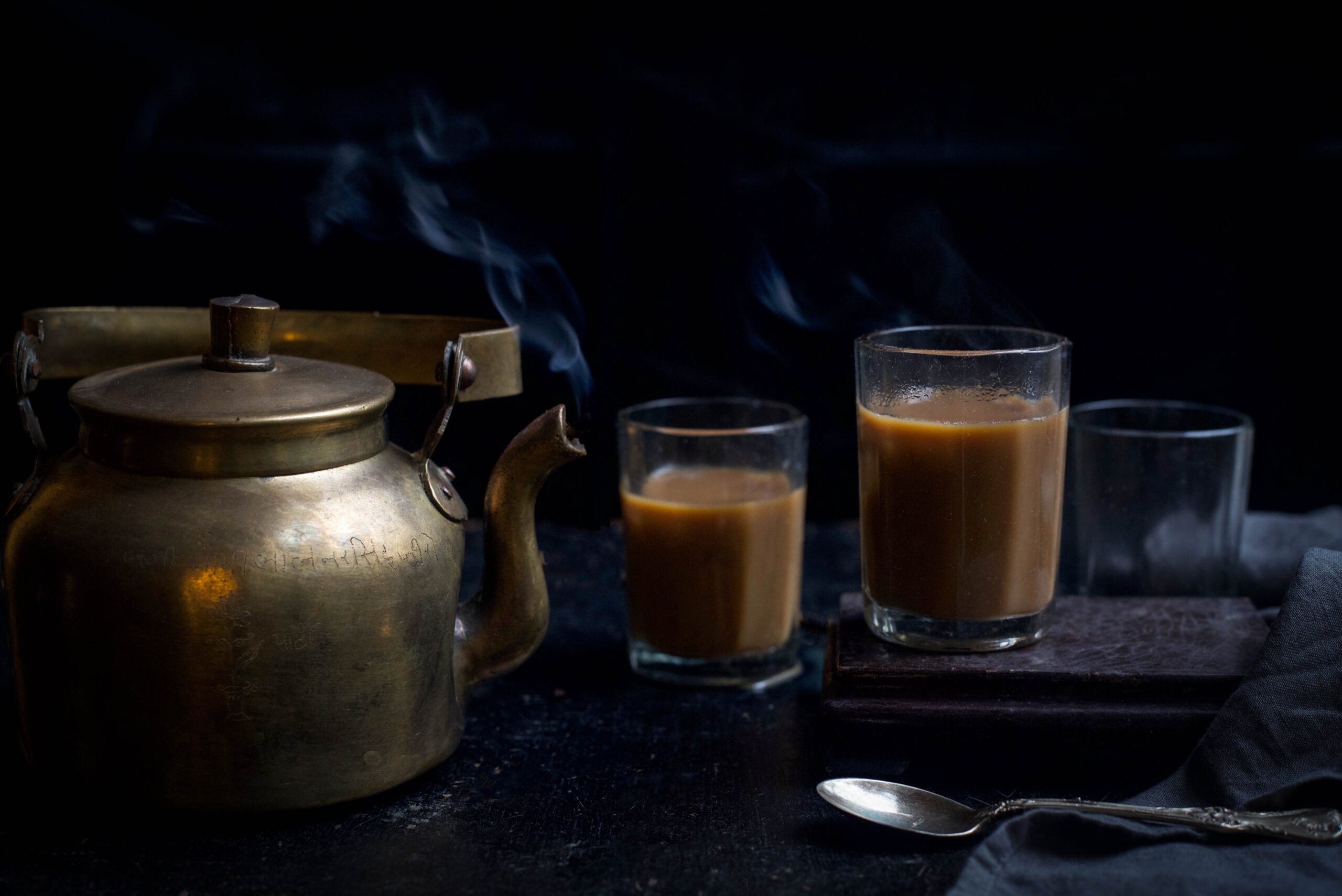
Masala Chai Powder
(Yield – approximately 100 grams)
Ingredients
¾ cup black pepper
½ cup cloves
3 tablespoons peeled cardamom
½ cup cinnamon sticks
1 tablespoon ginger powder
1 tablespoon pipramul powder
Tea is so quintessentially Indian that it’s easy to forget that it was actually introduced to India by the British. Originally from China, the tea shrub was found to grow well in hilly regions like Darjeeling and Assam, and closer to my home, in the Nilgiris. In fact, the word “chai” is from the Mandarin word “cha”.
I grew up watching masala chai powder batches being made for a year at a time during the hot summers. This is what is now known as a Macrobiotic approach, making use of the logic of the seasons, in this case the heat. I have found that sun-drying makes the flavours bloom. But masala chai was originally had in the winters, as the herbs and spices had a warming effect – even roasting in the winter sun was sufficient, provided there was no rain.
If you’re trying this method on a warm day, roast all the ingredients except the ginger and pipramul powders in the sun. If you’re in a rainy or wintry season like I am right now, simply roast the ingredients (except the ginger and pipramul powders) on an iron pan for less than five minutes.
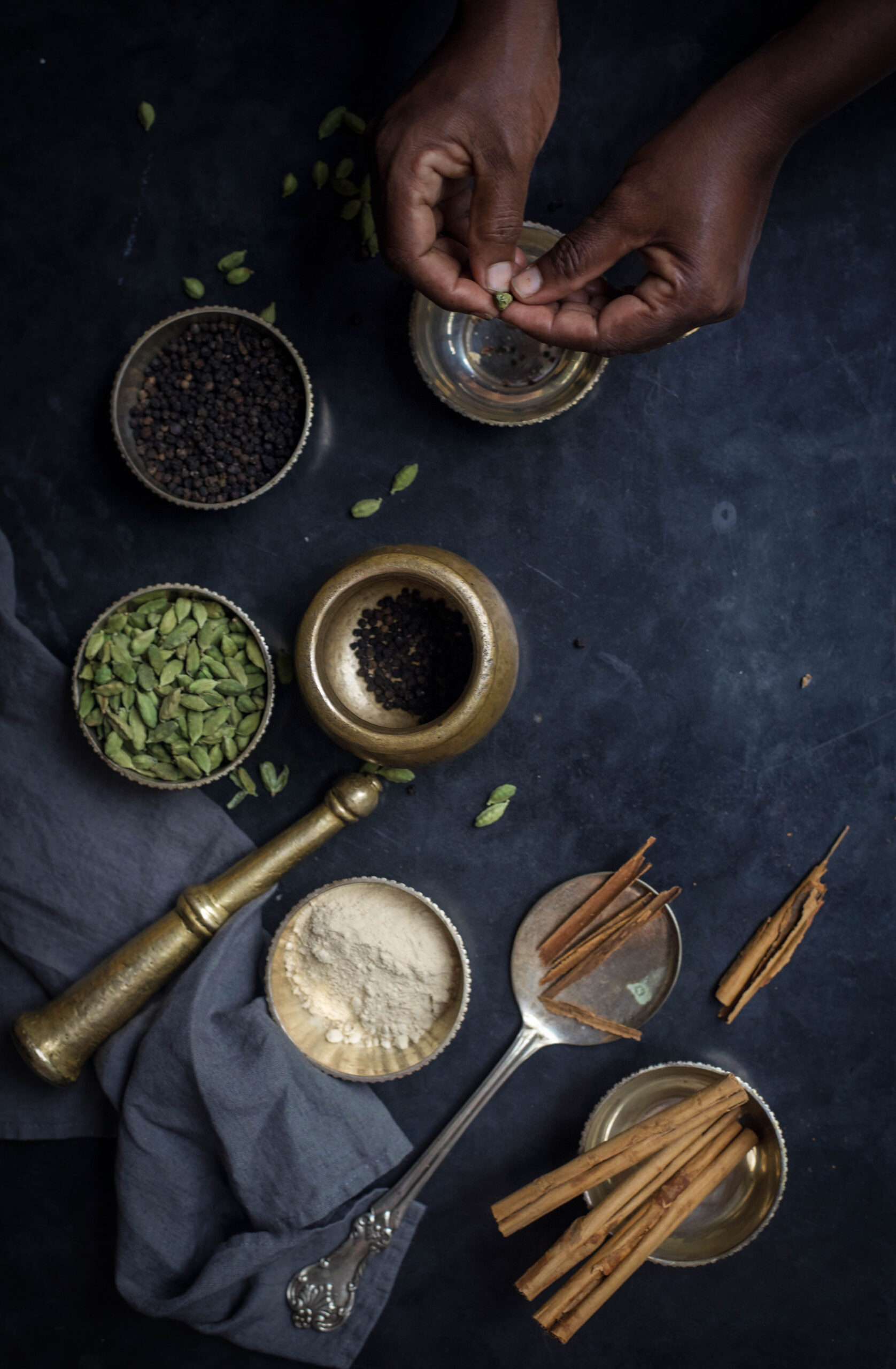
If you’re a fan of spices, the other ingredients will all be familiar to you, but if you’re wondering, pipramul is also known as Indian long pepper or ganthoda, and is a rhizoid similar to ginger. It aids digestion and helps with any kind of gastric trouble.
Once the ingredients have cooled, blend them into a powder. Add the ginger and pipramul powders and mix thoroughly. Store in an air-tight container.
If kept dry, you can use this powder for months at a time. It’s used only for chai and added into the boiling process of tea making, as is the Indian way.
My few minutes at that chai stall in Kolkata that morning made me ponder what a privilege it is to have tea at home, and not on the go while on the job. Tea is said to be a contemplative beverage, and is such a wonderful companion to both conversations with others and moments of musing alone. I’m contemplating the people I met that morning as I savour this cuppa. What’s on your mind today?


